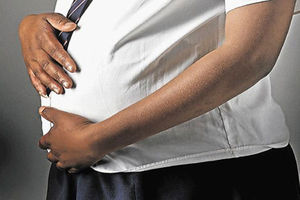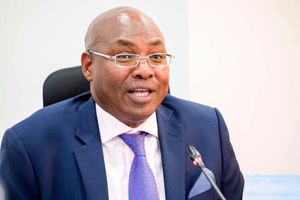Majority of SHA-listed health facilities struggling to run, says report

The Social Health Authority building in Nairobi.
What you need to know:
- Report shows that eight out of 10 health facilities are struggling to meet payroll expenses.
- The survey also revealed that 81 per cent of facilities are unable to pay suppliers.
Nine out of 10 private and public healthcare facilities in the country are struggling to meet their operational costs due to delayed payments by the Social Health Authority, a new report shows.
The report by the Rural and Urban Private Hospitals Association of Kenya (RUPHA), based on a survey conducted between December 24 and December 31, 2024, also shows that eight out of 10 health facilities are struggling to meet payroll expenses.
The survey with responses from 243 healthcare facilities across 63 Social Health Authority (SHA) branches revealed that 81 per cent of facilities are unable to pay suppliers while 74 per cent are currently experiencing shortages of essential supplies.
At least six out of 10 facilities are having challenges settling debts, with a majority of those, at 32 per cent, being at risk of auction and 18 per cent involved in small claims court cases.
The report comes thre months after President William Ruto, during his Mashujaa Day address in Kwale, announced the release of Sh3 billion to clear outstanding monies owed to healthcare providers under the Universal Health Coverage (UHC) programme but now according to RUPHA that is yet to happen.
"In a matter of weeks, SHIF will be serving us efficiently and making the dream of Universal Health Coverage come true," President Ruto then said.
The survey examined the payment status, claim settlement rates, and payment frequency for healthcare facilities reimbursed by SHA during the period October to December 2024.
It highlights delays and disparities in payment disbursement, as well as limited payment frequency healthcare facilities in Kenya are currently grappling with.
“In October 2024, only 19 per cent of facilities received payments, leaving 81 per cent unpaid. The situation improved slightly in November, with 23 per cent paid and 77 per cent unpaid, but regressed in December, with just 20 per cent receiving payments and 80 per cent unpaid by 24th of December 2024,” RUPHA found.
“For Level 2 & 3 facilities that were paid, the most reported sum received during the period was less than Sh50,000, accounting for 29 per cent of these facilities. Additionally, 23 per cent of facilities reported receiving between Sh100,001 and Sh200,000. Only 5 percent of Level 2 & 3 facilities that were paid received payments exceeding Sh1,000,000 in the period,” the findings show.
For Level 4-6 facilities, as expected by the scope and complexity of care they provide, reported higher payments than the primary care facilities.
“A majority (51 per cent) of those paid reported receiving between Sh500,000 and 5,000,000 during the same period. Specifically, 23 per cent received between Sh500,001 and 1,000,000, while 28 per cent received between Sh1,000,001 and 5,000,000,” RUPHA found.
The report also states that only 35 per cent of Level 2 & 3 facilities reported receiving payments during the period, while the remaining 65 per cent received no payments highlighting the funding challenges at this level of care.
“Ministry of Health primary healthcare facilities surveyed reported receiving no payments at all, 42 per cent of Faith-Based Organization (FBO) primary healthcare facilities reported receiving at least one payment while 35 per cent of private primary healthcare facilities received payments,” the findings highlight.
Among Level 4-6 facilities, 55 per cent reported receiving payments, while 45 per cent did not receive any payments. RUPHA discloses that payment rates across ownership categories here were relatively more balanced.
“55 per cent of FBO Level 4-6 facilities received payments, 55 per cent of private Level 4-6 facilities also reported payments while 50 per cent of Ministry of Health Level 4-6 facilities received payments”.
This in summary means that higher-tier facilities (Levels 4-6) fared better in payment consistency compared to primary care facilities (Levels 2 & 3).
When taken together, 35 per cent of Level 2 & 3 facilities received payments, while an average of 55 per cent of Level 4-6 facilities were paid.
The findings disclose that the disparity was particularly stark for Ministry of Health facilities, where 50 per cent of Level 4-6 facilities received payments, compared to 0 per cent of Level 2 & 3 facilities surveyed.
“This data suggests that higher-tier facilities across all ownership categories were more likely to receive SHA reimbursements compared to primary healthcare facilities. When all facilities regardless of ownership category are examined together, a trend emerges with Level 2 facilities reporting the least instances of payment (21 percent) and level 5 and 6 showing highest likelihood of having received at least one payment during the period,” RUPHA noted then concluded that this trend may reflect what they describe as a ‘structural or design challenge in the recent healthcare reforms’.
The revelations come after SHA announced that it had disbursed Sh1.12 billion owed in claims to 5000 healthcare facilities around the country.
SHA on December 23, 2024 said that since its rollout on October 1, 2024, a total of Sh7.3 billion has been disbursed. This comprises Sh1.3 billion under the Primary Health Care Fund and Sh6 billion for Social Health Insurance Fund (SHIF) claims.
However, according to RUPHA chairperson Brian Lishenga, as per their findings, SHA claims performance during the period highlighted significant delays and minimal reimbursements, with just 42 per cent of facilities reporting to have received payments for their SHA claims.
“Payments were predominantly minimal, with 52 per cent of facilities receiving payment for less than 20 per cent of their submitted claims, and 58 per cent of paid facilities receiving only one payment during the three-month period,” he noted.
“NHIF arrears payments also revealed disparities, with 49 per cent of facilities reporting no payment, 40 per cent receiving payments, and 11 per cent uncertain whether the payments received were for arrears. Tertiary care facilities, particularly Levels 5 and 6, reported better payment rates compared to primary care facilities, where challenges were more pronounced.”
According to RUPHA, cash flow challenges were evident, with severe financial constraints reported across all facility levels and ownership categories.
Only 5 per cent of primary care facilities and 51 per cent of tertiary facilities received payments exceeding Sh1,000,000 during the period while newly contracted and previously contracted facilities reported similar experiences, with over 40 per cent of both categories receiving payments covering less than 10 per cent of their liabilities.
The findings further reveal that some SHA branches, such as Kiambu and Embu, demonstrated strong payment processing, while others, including Maua and Meru, recorded the highest number of unpaid facilities, particularly at the primary care level.
Financial distress was reported by 96 per cent of surveyed facilities, with private facilities being the most affected (98 per cent), followed by FBO facilities at 90 per cent.
“The most common stressors included operational costs (89 per cent), payroll expenses (87 per cent), and supplier payments (81 per cent), alongside shortages of essential supplies and reliance on loans to sustain operations,” RUPHA explained while also disclosing that the NHIF claims reconciliation process the government embarked on was completed by 56 percent of facilities, with higher rates observed among tertiary facilities, particularly Levels 5 and 6.
“Primary care facilities faced significant barriers, such as lack of awareness of the process and limited access to claims portals. Administrative inefficiencies were highlighted by the fact that 52 per cent of unpaid facilities were asked to resubmit bank details.”
However, speaking to Nation in an exclusive interview on Sunday, Acting SHA CEO Robert Ingasira dismissed claims that both private and public hospitals have not been paid.
“We have so far paid Sh7.3 billion. When I saw the report I talked to Dr Lishenga and we agreed to meet in my office either Monday or Tuesday at the time of his choosing so that I saw him data on all the 5,000 healthcare facilities around the country that we have made payments to and in fact over 90 per cent of the facilities both private and public have been paid. I want him to come so that we deal with it specifically because I think some of these healthcare facilities are not being honest,” he told the Nation.
“The problem is some of these private facilities handle their financial issues secretly and so there are those who receive money and don’t want to disclose which is why I want to show Dr Lishenga the data and he can come with the list of his members we sort it out because data does not lie. For SHA, October and November, more than 90 per cent of the facilities received more than 90 per cent of their money,” he explained while highlighting that a few facilities had a problem.
He added: “They had problems with bank details because of change of names and other things and so I wrote to them asking for the correct details because you know when many of these facilities applied for license renewals, we started having issues of the name of the facility as it is in the certificate of registration varying from as it is in the KMPDC certificate which is why some facilities did not get money but the ones who sorted that out I paid them. Now I want Dr Lishenga to come with his list so that we establish who has not been paid and sort it out.”





